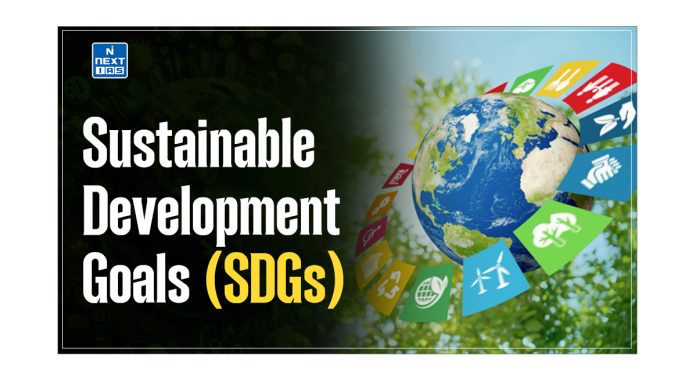Food security is the availability of food and the access to it by people. It means that people have enough food to eat all year round and that the food is safe and nutritious.
- According to the World Food Programme, 195 million people in India are undernourished.
- 43% of children in India are chronically undernourished.
- India ranks 68 out of 113 major countries in terms of the Global food security index 2022.
There are Four Dimensions:
| Availability: It is related to the production and supply of food. |
| Access: It is related to the ability of people to obtain food. |
| Utilization: It is related to the way people use food. |
| Stability: It is related to the ability of the food system to withstand shocks and stresses. |
Why is there a Need for Food Security in India?
- Population Pressure: With over 1.3 billion people, India has a large and growing population. The increasing demand for food places significant pressure on agricultural production and food resources.
- Agricultural Productivity: India’s agricultural sector is characterized by low productivity due to several factors such as fragmented land holdings, inadequate irrigation facilities, lack of modern farming techniques, and limited access to credit and technology.
- Climate Change and Natural Disasters: Erratic weather patterns, including droughts, floods, and extreme temperatures, affect crop yields and livestock productivity.
- Water Scarcity: Agriculture in India is heavily dependent on monsoon rains. However, rainfall patterns are increasingly unpredictable, leading to water scarcity in some regions.
- Land Degradation and Soil Health: Land degradation, caused by factors like erosion, overuse of chemical fertilizers, and improper land management practices, poses a threat to agricultural productivity.
- Storage and Distribution: Inefficient storage facilities and inadequate cold chain systems result in substantial food losses and wastage.
- Poverty and Inequality: Many people, particularly in rural areas and marginalized communities, struggle to afford and access nutritious food consistently.
How to Address the Challenges Related to Food Security in India?
- Sustainable Agriculture Practices: Promote sustainable farming practices such as organic farming, agroforestry, and integrated pest management. These practices enhance soil fertility, reduce chemical inputs, and conserve water, leading to increased productivity and resilience.
- Irrigation and Water Management: Improve irrigation infrastructure by expanding access to reliable irrigation facilities, promoting water-efficient technologies like drip irrigation, and implementing water harvesting and conservation techniques.
- Research and Technology: developing high-yielding crop varieties, drought and pest-resistant seeds, and innovative farming techniques. Encourage the adoption of modern technologies like precision agriculture, remote sensing, and digital farming tools to optimize resource use and improve productivity.
- Climate Change Adaptation: Implement crop diversification, crop rotation, and agroecology. Develop early warning systems for extreme weather events and support farmers in adopting climate-resilient practices.
- Storage and Cold Chain Infrastructure: investing in modern storage facilities, cold chain infrastructure, and transportation systems will help reduce food losses and wastage.
- Strengthening Food Distribution Systems: Enhance the efficiency of food distribution networks through better logistics, supply chain management, and market linkages.
How is Food Security Ensured in India?
The Government of India has taken a number of initiatives including
- The National Food Security Act, 2013
- The Public Distribution System (PDS)
- The Mid-Day Meal Scheme
- The Integrated Child Development Services (ICDS)
- The National Nutrition Strategy
- The Pradhan Mantri Krishi Sinchai Yojana (PMKSY)
- The Rastriya Krishi Vikas Yojana (RKVY)
- The National Mission for Sustainable Agriculture (NMSA)
National Food Security Mission
- In 2007, the National Development Council (NDC) adopted a resolution to initiate a Food Security Mission.
- This mission aimed to increase the annual production of rice by 10 million tonnes, wheat by 8 million tonnes, and pulses by 2 million tonnes by the end of the Eleventh Plan (2011-12).
- In line with this resolution, the ‘National Food Security Mission’ (NFSM), a Centrally Sponsored Scheme, was launched in October 2007.
- The NFSM proved to be highly successful, meeting its targets and achieving the desired additional production of rice, wheat, and pulses.
National Food Security Act (NFSA), 2013
The National Food Security Bill, which was passed in India in 2013 and subsequently enacted as the National Food Security Act (NFSA), is a landmark legislation aimed at ensuring food security for the population.
Key Features of the National Food Security Act
- Targeted Coverage: The Act identifies specific categories of beneficiaries entitled to subsidized food grains. These include priority households, which constitute the poorest of the poor, and eligible households under the Antyodaya Anna Yojana (AAY).
- Entitlements: The Act guarantees the right to receive food grains at subsidized prices. Nutritional support is also provided to pregnant women and lactating mothers, as well as children through the Integrated Child Development Services (ICDS) program.
- Subsidized Prices: For priority households, the prices for rice, wheat, and coarse grains are fixed at Rs. 3, Rs. 2, and Rs. 1 per kilogram, respectively.
- Public Distribution System (PDS) Reforms: The Act emphasizes the need for strengthening and reforming the PDS, by computerization of records, and grievance redressal mechanisms.
- Grievance Redressal: It aims to provide a platform for beneficiaries to seek remedies in case of denial or irregularities in accessing their entitlements.
Way Forward
It refers to the state in which all individuals within a country have access to an adequate supply of nutritious food, can afford to purchase high-quality food, and face no obstacles in obtaining it. While those living in poverty often struggle to meet their food needs, even wealthier individuals can experience food insecurity during emergencies or crises. In India, numerous people encounter issues with food and nutrition security, with particular groups being more severely impacted.
To ensure the widespread availability of food, the Indian government has established a food security system comprised of two main components: a reserve stock of food and a public distribution system. Additionally, the government has implemented various programs aimed at reducing poverty and improving food security. In order to ensure food security in India it will require a multi-pronged approach that includes increasing agricultural production, reducing inequalities in access to food improving the infrastructure, and raising awareness.
Asked Questions in UPSC
Q. What are the salient features of the National Food Security Act, of 2013? How has the Food Security Bill helped in eliminating hunger and malnutrition in India? (Answer in 250 words) (UPSE CSE 2021)
FAQs
How Does PDS Ensure Food Security in India?
With the help of targeted Identification PDS provides subsidized food grains. DS supplies essential commodities such as rice, wheat, sugar, and kerosene oil.
It maintains a buffer stock of food grains to meet emergency requirements, such as natural disasters. DS has an extensive distribution network spread across the country. Fair Price Shops act as the primary distribution points to reach the most vulnerable populations
.
GS - 2



